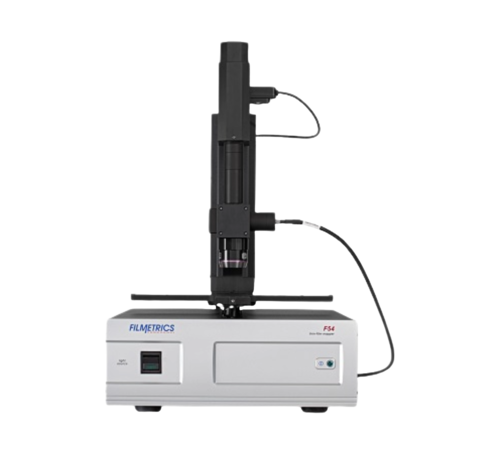How an Optical Fibre Diameter Analyser Improves Manufacturing Accuracy
How an Optical Fibre Diameter Analyser Improves Manufacturing Accuracy
Blog Article
Maximize Your Fibre Optic Performance: Understanding Optical Fibre Diameter Analyser Innovation
The performance of fiber optic systems is seriously influenced by the precision of their size, an aspect frequently overlooked in the pursuit of optimum signal honesty. Recognizing the technology behind optical fiber diameter analysers reveals the detailed equilibrium between dimension accuracy and manufacturing top quality.
Relevance of Optical Fibre Diameter
The diameter of optical fibre plays a vital duty in determining the efficiency and performance of communication systems. Alternatively, smaller sized sizes often tend to sustain fewer settings, which can improve signal clarity and lower crosstalk.

Additionally, comprehending the size's implications can cause cost savings by lowering the need for signal amplification and repeaters in considerable networks (optical fibre diameter analyser). To conclude, the importance of optical fibre size can not be overstated, as it straight affects the general effectiveness and dependability of modern communication systems

Just How Size Affects Signal Quality
Signal quality in optical fiber systems hinges dramatically on the size of the fiber. The size affects a number of crucial parameters, including depletion, bandwidth, and modal dispersion. A smaller sized diameter can bring about greater attenuation prices, leading to signal loss as light journeys via the fiber. This depletion can jeopardize the stability of the transmitted data, resulting in a decline in signal high quality, specifically over fars away.
Alternatively, larger sizes generally permit improved light capture and minimized modal dispersion, enhancing signal clearness. In multimode fibres, a bigger core diameter can sustain several light modes, but it may additionally introduce intermodal diffusion, which can degrade signal top quality. Choosing the ideal fiber diameter is important for achieving the wanted performance in specific applications.
Additionally, the interaction between the fibre diameter and the wavelength of the light utilized plays a vital role in determining the reliable transmission distance and total signal integrity. Therefore, understanding just how fibre diameter influences signal top quality is important for network developers and designers making every effort to optimize optical fiber systems for reliable, high-speed data transmission.
Introduction of Size Analyser Innovation
In several optical fiber production procedures, exact dimension of fiber size is important for making certain consistent efficiency and top quality (optical fibre diameter analyser). Diameter analysers are sophisticated tools made to examine the physical dimensions of optical fibers with high precision. They employ innovative optical and laser modern technologies to determine the diameter, ovality, and concentricity of the fiber, therefore supplying essential information for high quality control
These analysers can run in-line during the production procedure or as part of off-line testing protocols. In-line systems allow real-time monitoring, allowing makers to adjust criteria promptly, thus maintaining ideal manufacturing problems. Off-line analysers, on the various other hand, offer comprehensive assessments of batches, ensuring that any type of inconsistencies from specified tolerances are determined and addressed.
Diameter analysers dramatically add to the reduction of flaws in optical fibres, boosting total item reliability. By consistently measuring key parameters, these innovations promote compliance with market standards and specifications. As the demand for high-performance optical fibers remains to climb, the role of size analysers comes to be significantly essential in attaining the preferred high quality and performance criteria in fibre optic systems.
Secret Attributes of Fiber Size Analysers
Although numerous models of fiber diameter analysers exist, they typically share a number of crucial functions that enhance their functionality and integrity. One of the most substantial attributes is high-resolution dimension capacities, which ensure accurate size analyses, crucial for preserving quality control in fibre production. In addition, numerous analysers include sophisticated optical sensors created to identify minute variations in fiber size, therefore providing vital information for process optimization.
An additional crucial function is real-time surveillance, allowing operators to receive prompt responses on fibre size throughout the manufacturing process (optical fibre diameter analyser). This capacity assists in rapid adjustments and browse around here lowers the probability of defects. Several analysers additionally come furnished with easy to use interfaces, making it possible for operators to easily navigate via data and setups results
Additionally, durable information storage and analysis performances are essential for tracking historic efficiency patterns and making certain conformity with market requirements. These functions jointly contribute to the effectiveness of fibre size analysers in optimizing fibre optic efficiency.
Best Practices for Fiber Optimization

First, regular calibration of optical fiber size analysers is essential. This makes sure accurate dimensions and lessens possible discrepancies that might impact efficiency. Next, keeping a tidy working setting is vital; dust and pollutants can cause signify destruction.
Additionally, it is necessary to choose fibres that meet details application demands. This entails assessing elements such as attenuation, transmission capacity, and environmental problems. Appropriate installation techniques ought to likewise be adhered to, consisting of preventing sharp bends and excessive stress, which can compromise fibre honesty.
In addition, employing sophisticated surveillance systems can help with real-time performance assessments, enabling timely recognition of concerns. Routine testing and maintenance must be performed to make certain that fibers remain within ideal functional criteria.
Last but not least, training employees on the most up to date fiber optimization modern technologies and methodologies will improve their capacity to execute effective approaches. By following these finest practices, companies can considerably improve the performance and life-span of their optical fibre systems, ensuring reliable communication and information transfer.
Conclusion
In verdict, the combination of optical fiber size analyser technology is critical for making best use his explanation of fiber optic efficiency. By ensuring accurate dimensions of fiber measurements, these analysers dramatically boost signal top quality and reduce losses throughout information transmission. Normal calibration and maintenance of the analysers are necessary to support ideal efficiency and conformity with industry standards. Ultimately, the application of this modern technology promotes improved information transmission rates and enhances original site signal stability, adding to the general efficiency of fibre optic systems.
Signal top quality in optical fiber systems hinges significantly on the diameter of the fibre.In several optical fibre manufacturing procedures, precise dimension of fiber size is crucial for guaranteeing regular efficiency and quality. As the need for high-performance optical fibres continues to increase, the role of size analysers becomes significantly essential in attaining the wanted top quality and efficiency standards in fibre optic systems.
These functions jointly contribute to the efficacy of fiber diameter analysers in enhancing fiber optic efficiency.
In verdict, the assimilation of optical fiber diameter analyser innovation is crucial for making the most of fiber optic efficiency.
Report this page